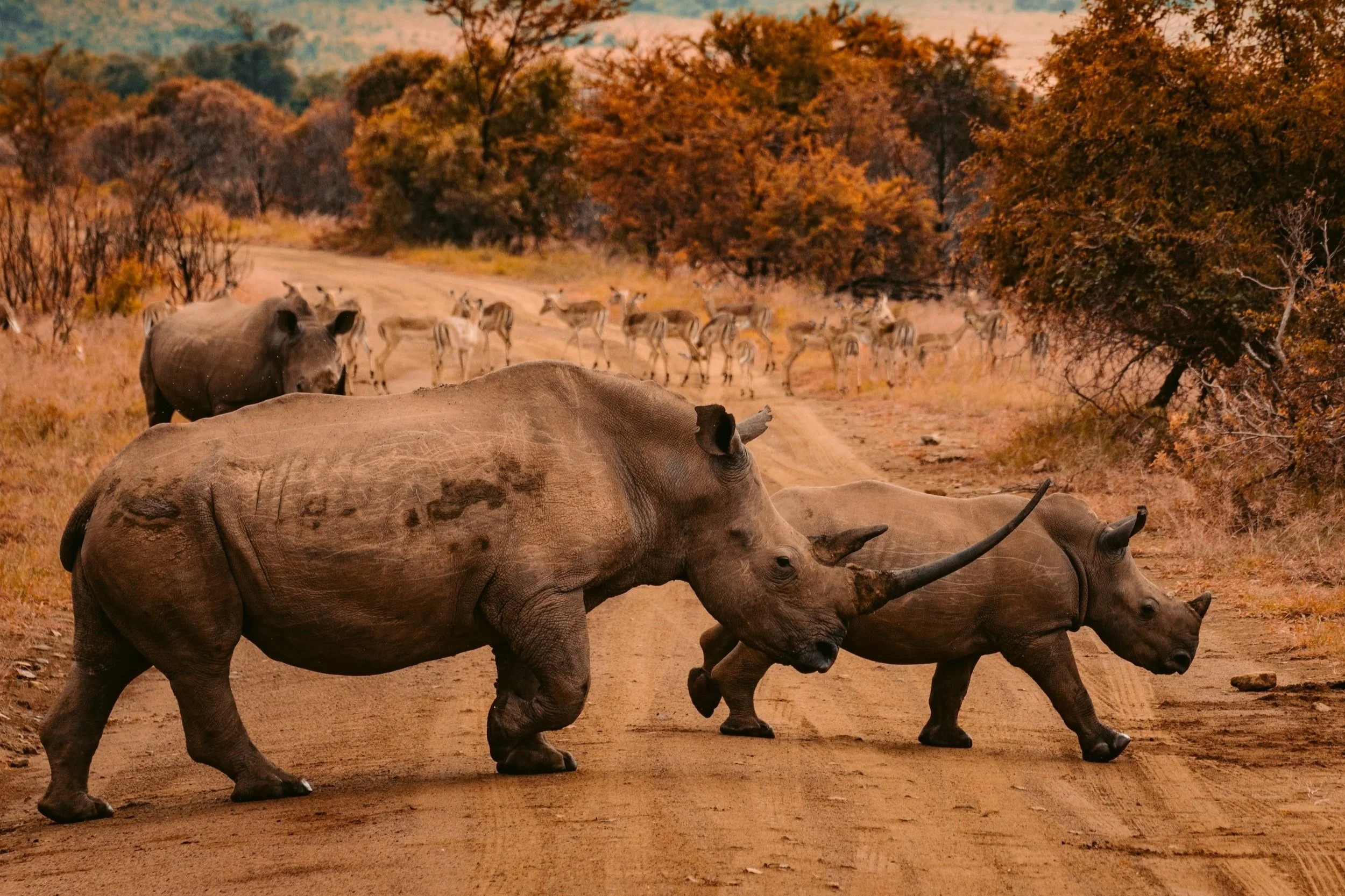War’s Other Victims: Animals
Rhinos cross the road | Unsplash
Over decades, armed conflict has reduced animal populations in Africa more than any other factor, according to new research.
By Rachel Nuwer | New York Times
In 1996, when war broke out in what is now the Democratic Republic of Congo, just 31 northern white rhinos remained in Garamba National Park, the last stronghold of this endangered species. Armed militias reached the park less than a year later, and half of the park’s elephants, two-thirds of its buffalos and three-quarters of its hippos disappeared in three short months.
Poaching of northern white rhinos also resumed, despite conservationists’ best efforts. Today, after a succession of armed clashes, only three northern white rhinos survive — all transplants from a zoo in the Czech Republic, and all confined to a single Kenyan conservancy.
That the rhinos’ habitat included a part of Africa plagued by human conflict was “desperately unfortunate,” said Kes Hillman-Smith, a Nairobi-based conservationist and author of Garamba: Conservation in Peace and War. “The endless wars there have taken their toll on all the wildlife in the region.” Many case studies have demonstrated that war can affect the survival of local populations, sometimes threatening entire species. But the research is mixed: In some cases, conflict actually seems to aid animals.
“There are really two alternative hypotheses you can imagine. One is that war is just a disaster for everything, including environments. And the other is that pretty much anything that causes people to clear out from an area can be beneficial for wildlife.”
Teaming up with Dr. Pringle, Joshua Daskin, a conservation ecologist at Yale University, undertook a laborious search of 500 scientific studies, government white papers, nonprofit reports and park management documents. He sought out comparable wildlife counts, irrespective of the presence of conflict, from 1946 to 2010.
The researchers then calculated various animal population trajectories over time and compared them with known conflicts. Their final list encompassed 253 populations of 36 species of herbivorous mammals — including elephants, giraffes, zebras, hippos and wildebeests — in 126 protected areas throughout Africa.

